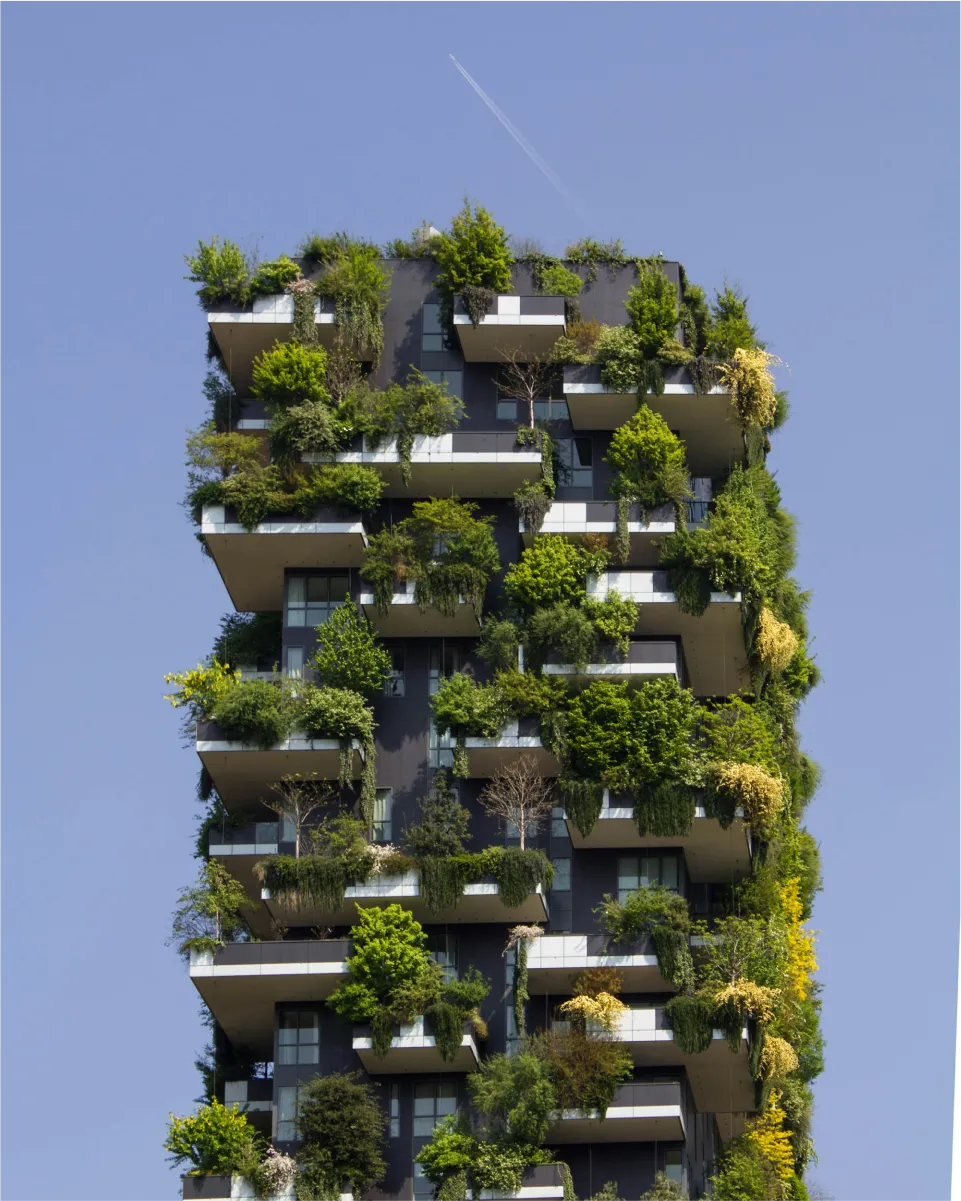How Landscape Architecture Transforms Urban Environments for Better Living

Introduction: Beyond Green Spaces – Defining the Art and Science of Urban Transformation
In our rapidly urbanizing world, the image of a city is often one of concrete, steel, and glass—a landscape defined by human construction. Yet, a powerful transformation is underway, reshaping our urban environments from the ground up. This change is driven by landscape architecture, a discipline that extends far beyond planting trees and designing parks. It is the art and science of analyzing, planning, and designing the built and natural environments to create spaces that are not only beautiful but also functional, resilient, and deeply beneficial to human life. This transformation moves beyond mere aesthetics, weaving nature into the urban fabric to foster better living for all.
What is Landscape Architecture? A Visionary Approach to Urban Planning
Landscape architecture is a comprehensive profession that blends environmental science, urban planning, and artistic design. Unlike landscape design, which often focuses on smaller-scale residential or decorative projects, landscape architecture addresses the broader systems of an urban landscape. Landscape architects are visionary problem-solvers who design everything from public parks and waterfronts to entire regional ecosystems. They analyze the climate, ecology, and social dynamics of a place to create outdoor spaces that serve critical functions, shaping a city's character and sustainability.
The Imperative: Why Our Urban Environments Need Transformation Now
The need for this transformation has never been more urgent. With forecasts suggesting that nearly 68% of the global population will live in urban areas by 2050, the pressures on urban settings are intensifying. Issues like the urban heat island effect, air and water pollution, biodiversity loss, and social isolation are direct consequences of poorly planned urban growth. Climate change exacerbates these problems with more frequent extreme weather events. Landscape architecture provides a powerful set of tools to counteract these negative trends, retrofitting our cities for a more sustainable and equitable future.
A Holistic Vision for "Better Living": Environmental, Social, Health, and Economic Dimensions
"Better living" in an urban context is a multifaceted goal. Environmentally, it means cleaner air, managed stormwater, and robust ecosystems. Socially, it involves creating inclusive and engaging public spaces that encourage community interaction and civic pride. From a health perspective, it means providing opportunities for physical activity and mental restoration. Economically, it translates to increased property values, tourism, and local business activity. Landscape architecture is uniquely positioned to address all these dimensions simultaneously, creating a positive feedback loop where a healthier environment fosters a healthier and more prosperous community.
The Pillars of Transformation: How Landscape Architecture Elevates Urban Life
Landscape architecture builds the foundation for a higher quality of urban life through four key pillars. It goes beyond simple beautification to systematically address the core environmental, health, social, and economic systems that define a city's success.
Cultivating Environmental Resilience and Sustainability
At its core, modern landscape architecture is a practice in sustainability. Landscape architects design green infrastructure systems that mimic natural processes to solve urban environmental problems. By integrating vegetation, permeable surfaces, and bioswales, they manage stormwater runoff at its source, reducing the burden on aging sewer systems and preventing pollutants from entering waterways. These green spaces also combat the urban heat island effect, improve air quality by filtering pollutants, support urban biodiversity, and create essential habitats for wildlife, making the entire urban landscape more resilient to the impacts of climate change.
Designing for Enhanced Public Health and Well-being
The link between green spaces and human health is undeniable. Thoughtfully designed outdoor spaces encourage physical activity, from walking and cycling to community sports. More profoundly, access to nature has a restorative effect on mental health. Studies show that people living closer to green spaces have a 55% less chance of having psychiatric disorders like stress and anxiety. By creating accessible parks, gardens, and naturalized areas, landscape architects provide essential escapes from the stress of urban settings, contributing directly to public well-being and mitigating health crises like air pollution, which is estimated to cause nine million deaths annually.
Fostering Vibrant, Inclusive Communities and Social Cohesion
Public spaces are the heart of a city's social life. Landscape architecture designs these spaces to be inclusive, accessible, and welcoming to diverse populations. A well-designed park, plaza, or waterfront becomes a stage for community life, hosting farmers' markets, cultural festivals, and everyday social interactions. These shared outdoor spaces help break down social barriers, build a sense of community ownership, and foster a collective identity. By creating places where people want to gather, landscape architects strengthen the social fabric of the city.
Driving Economic Vibrancy and Aesthetic Value
The economic benefits of a well-designed urban landscape are significant. Attractive public spaces and green infrastructure increase the value of nearby properties and attract new investment. Beautiful, walkable streetscapes boost foot traffic for local businesses. In fact, research shows that for every dollar spent on landscape architecture, there is a return of $2.10 in economic activity. Furthermore, iconic landscapes become tourist attractions, generating revenue and enhancing a city's brand. The industry’s economic impact is substantial, contributing an inflation-adjusted output of $6.68 billion to the U.S. economy in 2015.
The Landscape Architect's Toolkit: Key Strategies and Interventions
Landscape architects employ a diverse toolkit of strategies to weave nature and function back into the urban fabric. These interventions are designed to be multifunctional, delivering ecological, social, and aesthetic benefits simultaneously.
Integrating Green Infrastructure into the Urban Fabric: Green Walls, Permeable Surfaces, and Smart Irrigation Systems
Green infrastructure is a network of natural and semi-natural areas strategically planned to deliver ecosystem services. Landscape architects embed these systems directly into the city. Green roofs and walls insulate buildings and manage stormwater. Permeable pavements allow rainwater to infiltrate the ground, recharging aquifers and reducing stormwater runoff. Smart irrigation systems conserve water, while interconnected systems of rain gardens and bioswales filter pollutants from streets before they reach rivers and lakes.
Creating Multifunctional Parks and Open Spaces: From Pocket Parks to Large Urban Forests with Recreational and Ecological Value
Parks are no longer just patches of lawn. Landscape architects design them as high-performance systems. Small "pocket parks" can transform derelict lots into valuable community assets, while large urban forests serve as critical carbon sinks and biodiversity hotspots. These green spaces are programmed for a variety of uses—recreation, quiet contemplation, community gardening, and environmental education—ensuring they serve the diverse needs of the urban population while maximizing their ecological value.
Revitalizing Urban Waterways and Waterfronts: Restoring Riparian Landscapes, Water Features, and Public Access
Many cities were built on waterways that have since been neglected or industrialized. Landscape architects are leading efforts to reclaim these assets. This involves restoring natural riparian buffers that filter runoff and provide habitat, daylighting buried streams, and creating public promenades and parks along rivers and coastlines. These projects transform industrial liabilities into cherished public spaces that reconnect people with water, improve water quality, and create new recreational opportunities.
Enhancing Pedestrian Experience and Mobility: Designing Walkable Streetscapes and Integrated Public Transportation Hubs
A city's livability is often measured by its walkability. Landscape architects redesign streetscapes to prioritize people over cars. This includes widening sidewalks, planting street trees for shade and comfort, adding seating, and incorporating protected bike lanes. They also design the outdoor space around public transportation hubs, making them safe, welcoming, and seamlessly integrated into the urban fabric, encouraging sustainable modes of travel.
Adaptive Reuse of Industrial and Underutilized Sites: Transforming Brownfields and Derelict Spaces into Thriving Green Assets
Post-industrial cities are often left with a legacy of contaminated or abandoned sites known as brownfields. Landscape architects possess the expertise to lead the transformation of these areas. Through soil remediation, ecological restoration, and creative design, they can convert these derelict spaces into vibrant parks, ecological preserves, and new community centers, turning symbols of urban decay into beacons of renewal and sustainability.
The Collaborative Advantage: Landscape Architecture in a Multidisciplinary World
Transforming complex urban environments is not a solo endeavor. The most successful projects arise from deep collaboration, where the landscape architect often acts as a central integrator, bridging disciplines to achieve a holistic vision.
Working with Urban Planners and Architects: Seamless Integration of Built and Natural Environments
Landscape architects work hand-in-hand with urban planners and architects from the outset of a project. This ensures that the landscape is not an afterthought but an integral component of the overall urban plan. This collaboration aligns buildings, infrastructure, and outdoor spaces, creating a cohesive urban landscape where the built and natural environments support and enhance one another.
Engaging Engineers and Ecologists: Bridging the Gap Between Infrastructure, Hydrology, and Natural Ecosystems
To design functional green infrastructure, landscape architects collaborate closely with civil engineers and ecologists. Engineers provide expertise on hydrology and structural requirements, while ecologists offer insights into local ecosystems and biodiversity. The landscape architect synthesizes this technical information, ensuring that solutions like rain gardens are not only effective at managing stormwater but also support native plants and wildlife.
Partnering with Communities and Stakeholders: Incorporating Community Input for Truly Relevant and Beloved Spaces
The ultimate users of public spaces are the people who live and work nearby. Effective landscape architecture involves robust community engagement to understand local needs, cultural values, and aspirations. By co-designing spaces with residents, landscape architects ensure the final product is not only functional but also deeply meaningful and cherished by the community, leading to better stewardship and long-term success.
The Landscape Architect as a Visionary Leader: Orchestrating Complex Projects for Holistic Urban Transformation
In many large-scale urban projects, the landscape architect serves as the visionary leader. They possess the unique ability to think across scales, from the individual user's experience to the functioning of the entire regional ecosystem. They orchestrate the contributions of various specialists to ensure that every decision contributes to the overarching goals of sustainability, resilience, and better living.
Navigating Challenges and Envisioning the Future of Urban Landscapes
While the potential of landscape architecture is immense, realizing this vision requires navigating significant challenges and embracing innovation to build the cities of the future.
Overcoming Hurdles: Addressing Funding, Long-Term Maintenance, and Regulatory Complexities
Major urban transformation projects face hurdles such as securing adequate funding, navigating complex regulatory frameworks, and establishing plans for long-term maintenance. Advocating for the quantifiable economic benefits, such as the impressive 224% return on investment for green roofs, and demonstrating long-term value are key to overcoming these obstacles. Building stewardship programs with community partners is also crucial for ensuring these spaces thrive for generations.
Innovations Shaping the Next Generation of Urban Spaces: Data-Driven Design, Advanced Modeling, and Emerging Technologies
The future of landscape architecture is being shaped by technology. Data analytics and GIS mapping allow for more sophisticated site analysis, while advanced modeling software can simulate the performance of green infrastructure under different climate scenarios. Drones, smart sensors, and virtual reality are becoming standard tools, enabling more precise design, monitoring, and community engagement, leading to more effective and resilient urban landscapes.
The "Golden Age" of Landscape Architecture: Why This Moment is Critical for Urban Transformation
We are entering a critical period for urban development. With growing public awareness of climate change and a renewed focus on quality of life, the demand for the skills of landscape architects is soaring. The global Urban Planning Service market is projected to grow to $236.91 billion by 2031, reflecting a global commitment to creating better cities. Landscape architects are no longer just designers of amenities; they are recognized as essential leaders in shaping the future of our urban environments.
Towards Resilient and Equitable Urban Futures: Prioritizing Climate Adaptation, Social Equity, and Sustainable Communities
Looking ahead, the focus of landscape architecture will be on creating urban futures that are both resilient and equitable. This means designing for climate adaptation—preparing for hotter temperatures and more intense storms—while also ensuring that the benefits of green spaces are distributed fairly across all neighborhoods. The goal is to build sustainable communities where everyone has access to safe, healthy, and inspiring outdoor spaces.
Conclusion: A Greener, Healthier, and More Liveable Urban Future
The transformation of our urban environments is one of the defining challenges of our time. Landscape architecture provides a powerful, holistic framework for meeting this challenge, offering solutions that are at once innovative, practical, and profoundly human.
Reaffirming the Transformative Power of Landscape Architecture for Better Living
Landscape architecture is far more than an aesthetic practice; it is a critical discipline for urban survival and prosperity. By integrating natural systems with the built environment, landscape architects create cities that are more resilient to climate change, healthier for their inhabitants, socially cohesive, and economically vibrant. They transform the urban landscape, turning sterile spaces into thriving ecosystems and forgotten areas into beloved public commons.
A Call to Action for Sustainable Urban Development and Continued Investment in Green Infrastructure
The path to a better urban future is clear. It requires a fundamental shift in how we plan, design, and build our cities—a shift that places landscape architecture at the center of the process. Municipal leaders, developers, and citizens must recognize and advocate for continued investment in green infrastructure and high-quality public spaces. By championing the work of landscape architects, we can collectively build the greener, healthier, and more livable cities that future generations deserve.





.jpg)